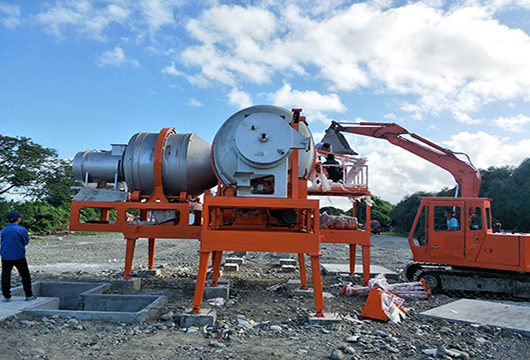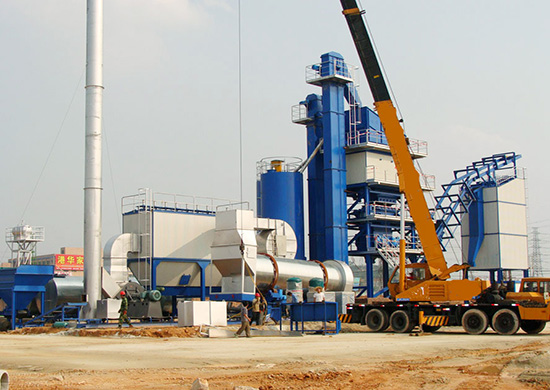An asphalt mixing plant is used to combine several aggregates with bitumen to produce hot mix paving material for various construction industries. The aggregates used can vary depending on the grade and size of asphalt required. Finer aggregates can also be added along with mineral fillers. There are two main types of asphalt mixing plants: continuous mix plants and batch mix plants. Both types of plants produce asphalt; their difference is found in the method used to produce said asphalt.

Working Principles Of Asphalt Batch Mixing Plant
1. Raw, unheated aggregates from different storage bins are fed into the cold aggregate feeder (alimentador de agregado frío).
2. The aggregates are moved into the drying drum via a conveyor system.
3. The burner fueling the drying drum ensures the aggregates are dried effectively with heat.
4. The plant is fitted with a primary dust collector. That collector is for filtering heavy dust particles, so there is less pollution.
5. Once the aggregates are dry, they are moved to the tower unit via a bucket elevator.
6. At the top of the tower unit is a multi-layered screening unit. As hot aggregates pass through the multiple screens, they get treated with the screening effect.
7. Separate hot bins are used to store different type of aggregates(diferentes tipos de agregados de asfalto).
8. Bitumen is stored and heated in special tanks that are equipped with pumping equipment. The bitumen is pumped into the weighing hopper.
9. The aggregates are weighted and discharged into the main mixing unit. Inside the mixer, filler materials and bitumen are mixed with the aggregates.
10. After mixing for the required time, the hot asphalt is ready to be used. It is typically discharged into waiting tucks, but it can also be sent to temporary storage silos.
11. The whole plant is controlled via a computerized control panel.

Components Of An Asphalt Plant
1. Primary vibrating screen
2. Cold feed bins
3. Charging conveyor
4. Hot aggregate bucket elevator: The bucket elevator is comprised of a long, covered structure with many buckets attached to a chain system. The heated aggregates are transported to the top of the tower in this elevator unit.
5. Drying drum with burner: Perhaps the most important part of the plant (planta de asfalto continua). It is compromised of a rotating drum and burner unit. The rotation ensures the aggregates are heated up evenly.
6. Pre-separator with bag filter: The bag filter is used to remove harmful dust particles and toxic gases from the plant’s emissions.
7. Hot bins
8. Multi-deck vibrating screens
9. Mixing unit: The mixing unit ensures all the raw materials are combined effectively for the correct duration. Mixers are typically jacketed to ensure the contents remains hot and ready for discharge.
10. Weighing hoppers: The weighing hoppers are essential for ensuring the correct proportions of raw materials are sent to the mixing drum.
11. Bitumen storage tanks: Direct heating type tanks are equipped with a burner. Meanwhile, indirect heating type tanks utilize an internal hot oil coil system for heating the bitumen.
12. Control Panel: PLC panel with a touchscreen display and interface for easy oversite and control of the plant.
13. Filler storage silo/hopper